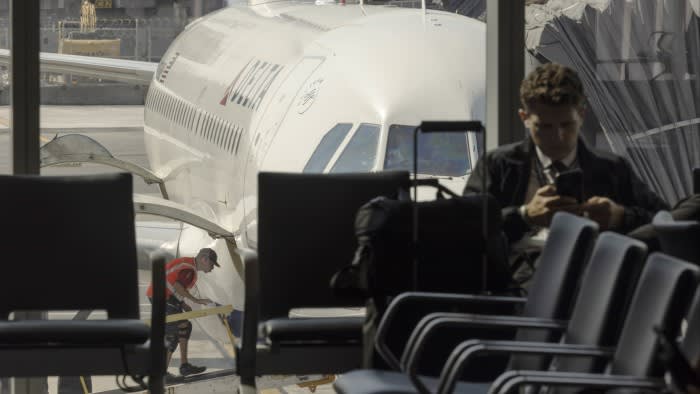Unlock the Editor’s Digest for free
Roula Khalaf, Editor of the FT, selects her favourite stories in this weekly newsletter.
The end of the same-day, out-and-back business air trip has been a long time coming — despite dire predictions of its side-effects. In 1973, a British Airways executive warned of the stress suffered by “businessmen [sic] who think that they can be 100 per cent effective on a there-and-back-in-a-day trip”. “Just watch some of our customers losing control of themselves when told of a delayed departure or read complaint letters written in flight or just post-flight,” he told an FT conference.
It has taken 50 years, a global pandemic, looming climate catastrophe, tightening travel budgets and previously unimaginable technological and workplace advances to curb bosses’ belief that if the flight schedule says a there-and-back-in-a-day trip can be done, it should be done, if not by them then by their minions.
This week Suzanne Neufang, head of industry trade body the Global Business Travel Association, said the one-day flight business trip “went out the door at the beginning of Covid and hasn’t really come back”. Good riddance.
In 1988, British Airways introduced a supersonic “day return” ticket to New York. Its “back in a day” discounted fare catered to a small minority of Concorde passengers who wanted to fly out from London in the morning, wheeler-deal in a JFK airport conference room for a few hours, and fly back that afternoon.
At the time, the cost of the ticket was said to compare favourably with staging a video conference. Concorde is long gone, but the ubiquity and cheapness of Zoom and competing platforms is one of the significant changes that is condemning the out-and-back trip. Another is an effort by corporate purse-string holders to cling on to the savings they reaped when coronavirus grounded most workers. Travellers are now encouraged to group multiple encounters into fewer, longer trips: three- to five-night stays account for 40 per cent of business travel, according to a GBTA survey.
Then comes the recognition that the BA manager’s warnings in 1973 were well-founded. What looks like efficient use of time is in fact a burden on the travelling executive, which any disruption or delay exacerbates. Finally, there is the environmental benefit of scrapping day-return flying. Professional services firm EY, which has blocked same-day trips by plane in its travel planner, says the proportion of trips there-and-back by plane in a day fell from 18 per cent of the total in 2019 to 3 per cent in 2023, contributing to a 59 per cent drop in business travel greenhouse gas emissions.
There will be exceptions. Heads of state and government will still fly in and out of summits for an hour or two of flesh-pressing and photo opportunities. Shuttle diplomacy, by definition, often requires ambassadors and ministers to jet between in-person negotiations. Chief executives occasionally need to make face-to-face contact to seal deals. But many of their claims to be indispensable are self-aggrandising bluster. In a world where everyone is trying to reduce their carbon footprint, counterparties may increasingly frown on CEOs who decide to fire up the corporate jet for a pointlessly rapid round trip.
The real beneficiaries of an end to the habit will be the lower ranks, forever forced on to short-haul flights at dawn, and back 15 hours later, in a self-defeating effort to avoid paying for an overnight stay. The fatigue factor is real. An acknowledgment that effectiveness, not speed, or physical presence, should be the aim of any meeting is overdue. Still, it is hard to imagine executives time-travelling back to 1957, when the FT advised they should never fly both ways and “if possible, come home part of the way by boat”.


